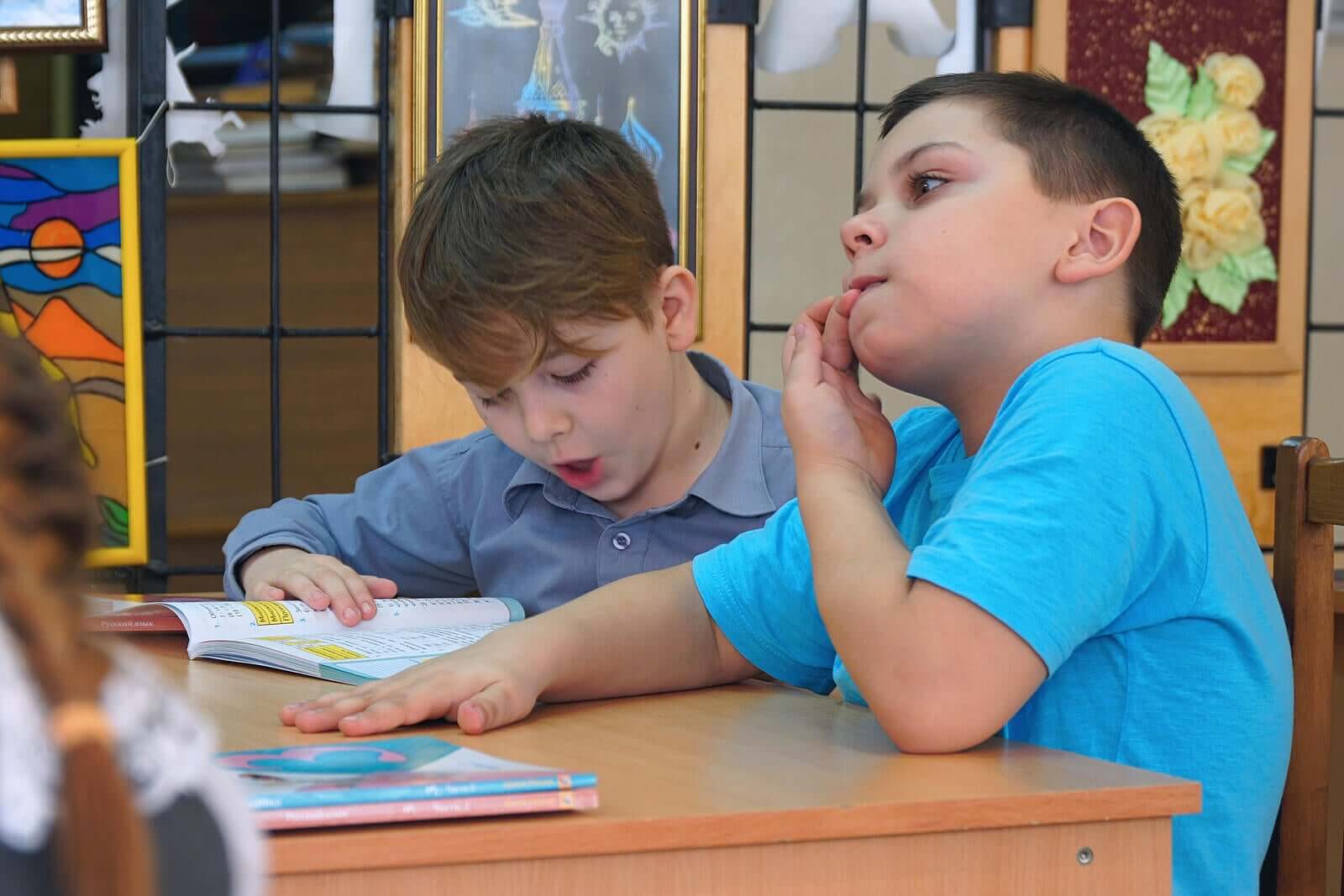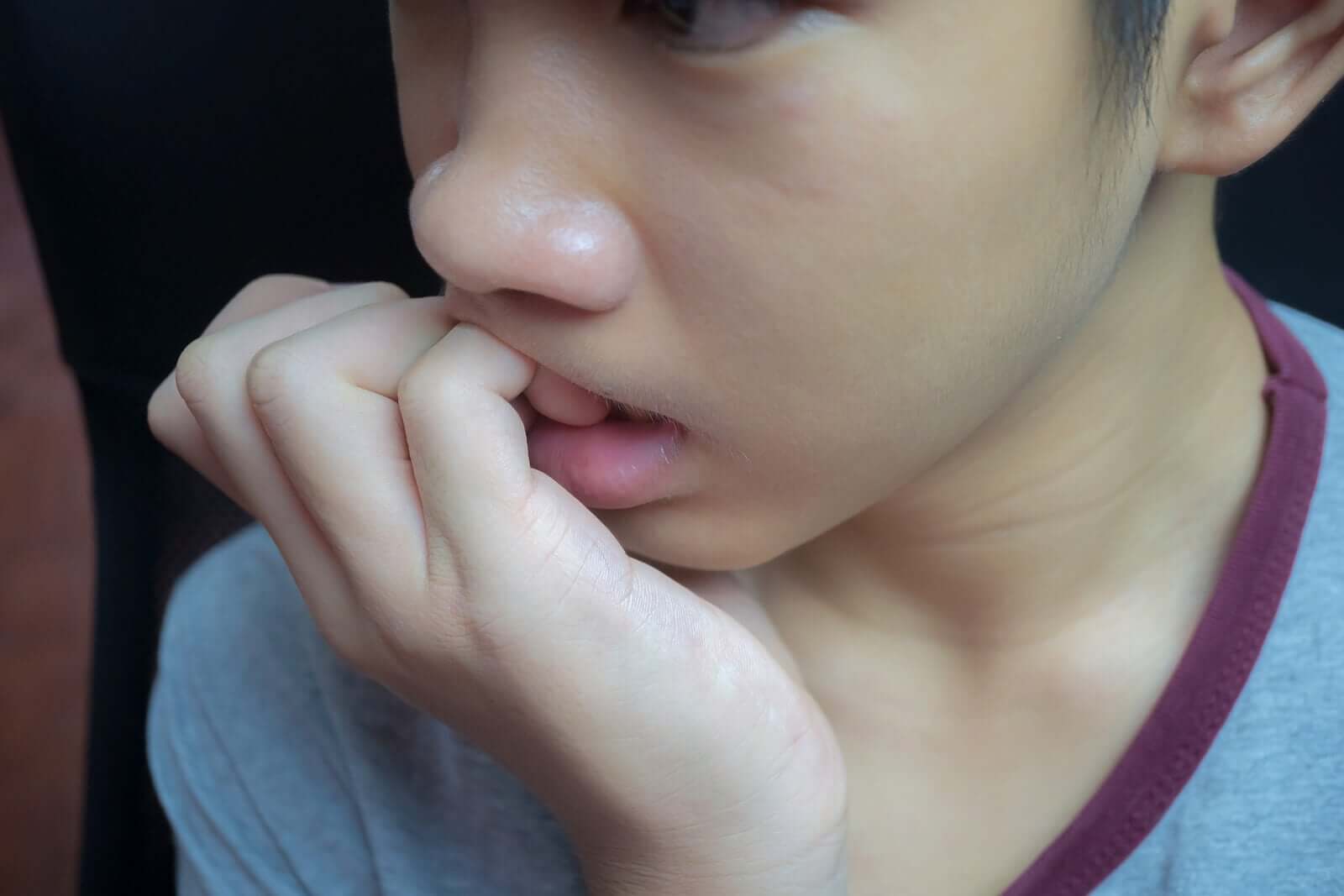Dermatophagia in Children: What Is It and How to Treat It?


Written and verified by the psychologist Elena Sanz Martín
No two children are the same and there’s no particular personality type that we should consider as normal. Some children are more calm and carefree, while others are more nervous and energetic. When your child is in the latter case, you may overlook certain behavior as they may be manifestations of their restless personality. This is the case with dermatophagia in children, which we’ll talk about today.
We all know children, and even adults, who frequently bite their nails. This habit is relatively common and normal in our society and, for that reason, we don’t normally pay too much attention to it.
However, it’s one of the many ways that children and adults manifest difficulty in dealing with anxiety or worry. Dermatophagia in children is another one of these. Knowing what’s behind it all will help us provide our children with the help they need in order to stop this type of behavior.

What is dermatophagia in children?
Dermatophagia is the act of biting one’s own skin repeatedly. Children who suffer from it usually bite the skin on their fingertips or around their cuticles, although they may also bite the inside of their cheeks or the skin on their lips.
As a result of this, different types of lesions form, such as ulcers or bleeding and reddened wounds that worsen over time. It’s quite common for a child who has suffered for some time with dermatophagia to have bitten their fingers raw. Seeing these open wounds will certainly ring warning bells for their parents.
Why does it happen?
When seeing the wounds that their own children have inflicted on themselves, parents won’t be able to understand why they resort to such apparently harmful and painful behavior. That’s why we need to understand the reasons behind dermatophagia.
First of all, it’s clear that it’s a nervous habit. It appears more frequently in children who are naturally anxious, or who suffer from some sort of anxiety disorder, such as generalized anxiety disorder (GAD) or social phobia. However, it can also stem from a specific event in the child’s life that has created this anxiety in them.
We could compare the sensation that these children experience with what we feel before sneezing. That uncomfortable itching feeling that’s only relieved by sneezing.
Something similar happens in this case. The child experiences a growing restlessness, which disappears when they bite their skin. They feel great relief in doing so, and it gives them a pleasant sensation. This is why it can be so difficult for children to resist the urge to continue doing so.
On the other hand, dermatophagia acts as a tool to cope with anxiety. By biting their fingers, tongue, or the inside of their mouth, their nervousness temporarily diminishes. In this way, the children get used to using this way of calming themselves down.
The problem is aggravated when this becomes a habit. The child begins to do it not only when they’re anxious, but also at other times, such as when they’re bored or distracted. It becomes such an automatic reaction, that they’re not even aware they’re doing it.

How can you treat dermatophagia?
If you see that your child is suffering from dermatophagia, then you need to take action. Firstly, to prevent further damage to the skin and, secondly, to teach them healthier and more effective coping strategies.
So, you’ll need to discover whether the anxiety that the child is feeling has been triggered by an isolated episode, or by some sort of disorder.
It may be that the child is suffering from a generalized type of anxiety, or maybe something specific that happened at school has caused them anxiety.
We can teach them techniques to control their anxiety, like breathing exercises, or relaxation techniques. Similarly, you’ll need to look for some practical tools to help them solve the problem, and so that they don’t get overwhelmed by the circumstances they find themselves in.
The most effective technique for directly treating dermatophagia is habit reversal. You can teach the child to perform some sort of opposite action when they detect the urge to bite their skin.
For example, they can sit on their hands for a few moments until the urge disappears. However, whatever the case, a child psychologist should evaluate them and prescribe the most appropriate treatment.
No two children are the same and there’s no particular personality type that we should consider as normal. Some children are more calm and carefree, while others are more nervous and energetic. When your child is in the latter case, you may overlook certain behavior as they may be manifestations of their restless personality. This is the case with dermatophagia in children, which we’ll talk about today.
We all know children, and even adults, who frequently bite their nails. This habit is relatively common and normal in our society and, for that reason, we don’t normally pay too much attention to it.
However, it’s one of the many ways that children and adults manifest difficulty in dealing with anxiety or worry. Dermatophagia in children is another one of these. Knowing what’s behind it all will help us provide our children with the help they need in order to stop this type of behavior.

What is dermatophagia in children?
Dermatophagia is the act of biting one’s own skin repeatedly. Children who suffer from it usually bite the skin on their fingertips or around their cuticles, although they may also bite the inside of their cheeks or the skin on their lips.
As a result of this, different types of lesions form, such as ulcers or bleeding and reddened wounds that worsen over time. It’s quite common for a child who has suffered for some time with dermatophagia to have bitten their fingers raw. Seeing these open wounds will certainly ring warning bells for their parents.
Why does it happen?
When seeing the wounds that their own children have inflicted on themselves, parents won’t be able to understand why they resort to such apparently harmful and painful behavior. That’s why we need to understand the reasons behind dermatophagia.
First of all, it’s clear that it’s a nervous habit. It appears more frequently in children who are naturally anxious, or who suffer from some sort of anxiety disorder, such as generalized anxiety disorder (GAD) or social phobia. However, it can also stem from a specific event in the child’s life that has created this anxiety in them.
We could compare the sensation that these children experience with what we feel before sneezing. That uncomfortable itching feeling that’s only relieved by sneezing.
Something similar happens in this case. The child experiences a growing restlessness, which disappears when they bite their skin. They feel great relief in doing so, and it gives them a pleasant sensation. This is why it can be so difficult for children to resist the urge to continue doing so.
On the other hand, dermatophagia acts as a tool to cope with anxiety. By biting their fingers, tongue, or the inside of their mouth, their nervousness temporarily diminishes. In this way, the children get used to using this way of calming themselves down.
The problem is aggravated when this becomes a habit. The child begins to do it not only when they’re anxious, but also at other times, such as when they’re bored or distracted. It becomes such an automatic reaction, that they’re not even aware they’re doing it.

How can you treat dermatophagia?
If you see that your child is suffering from dermatophagia, then you need to take action. Firstly, to prevent further damage to the skin and, secondly, to teach them healthier and more effective coping strategies.
So, you’ll need to discover whether the anxiety that the child is feeling has been triggered by an isolated episode, or by some sort of disorder.
It may be that the child is suffering from a generalized type of anxiety, or maybe something specific that happened at school has caused them anxiety.
We can teach them techniques to control their anxiety, like breathing exercises, or relaxation techniques. Similarly, you’ll need to look for some practical tools to help them solve the problem, and so that they don’t get overwhelmed by the circumstances they find themselves in.
The most effective technique for directly treating dermatophagia is habit reversal. You can teach the child to perform some sort of opposite action when they detect the urge to bite their skin.
For example, they can sit on their hands for a few moments until the urge disappears. However, whatever the case, a child psychologist should evaluate them and prescribe the most appropriate treatment.
All cited sources were thoroughly reviewed by our team to ensure their quality, reliability, currency, and validity. The bibliography of this article was considered reliable and of academic or scientific accuracy.
- Al Hawsawi, K., Al Aboud, K., & Ramesh, V. (2003). Dermatophagia simulating callosities. Dermatology and Psychosomatics/Dermatologie und Psychosomatik, 4(1), 42-43. https://www.karger.com/Article/PDF/70535
- AA, A. Z. (2018). Tragic Teenage Boy Presenting With Calluses Due to Dermatophagia. Dermatol Case Rep, 3(140), 2. https://www.researchgate.net/publication/326522135_Tragic_teenage_boy_presenting_with_calluses_due_to_dermatophagia
This text is provided for informational purposes only and does not replace consultation with a professional. If in doubt, consult your specialist.








